Crease-Free Concealers: Expert Insights & Techniques


Intro
Understanding the importance of crease-free concealers is essential for anyone who aims to achieve a flawless makeup look. Many factors contribute to the performance of concealers, such as skin type, the specific formula of the product, and application techniques. This article aims to dissect those factors, giving both beginner and advanced makeup enthusiasts the insights necessary to choose the right concealer for their needs. By examining various formulas and expert techniques, readers will gain valuable knowledge that will enhance their beauty routines.
Beauty Tips and Tricks
Skincare Routine Tips
A solid makeup application starts with a well-maintained skincare routine. To ensure concealer goes on smoothly and stays crease-free, consider the following steps in your skincare regimen:
- Hydration: Use a moisturizer tailored to your skin type. Dry skin can enhance the creasing effect.
- Eye Cream: Incorporate an eye cream to keep the delicate skin under your eyes supple.
- Primer: A quality primer not only helps makeup adhere better but also creates a smoother canvas.
Implementing these basic skincare tips will provide a firm foundation for any concealer application, minimizing the risk of it settling into fine lines.
Makeup Application Techniques
Understanding how to apply concealer properly is crucial to achieve a crease-free finish. Here are some techniques:
- Use a Small Brush: A small brush allows for precise application and helps to layer the product if necessary.
- Dabbing Motion: Apply concealer in a dabbing motion rather than swiping. Dabbing helps to press the product into the skin.
- Set with Powder: Lightly setting concealer with translucent powder can help it stay put. However, avoid using too much to prevent a cakey look.
Adapting these methods can drastically improve the longevity and appearance of concealer.
Product Reviews
Makeup Product Reviews
Reviewing specific concealers is essential for understanding their unique properties. Products like Maybelline Instant Age Rewind Concealer and NARS Radiant Creamy Concealer are well-regarded for their texture and staying power. These concealers cater to diverse skin types and preferences, making them excellent choices for many individuals.
Evaluating these products can provide valuable insights into performance and suitability for different skin types.
Expert Beauty Advice
Professional Makeup Artist Insights
Consulting professional makeup artists reveals significant techniques and strategies for concealer application. Many recommend using a damp sponge to blend concealer, as it helps to achieve a seamless finish by absorbing excess product.
Additionally, experts stress the importance of color correction. Using peach or orange-toned products under the eyes can neutralize dark circles before applying the concealer.
Beauty Industry News
Staying updated with product launches and trends is crucial. Major beauty brands frequently release new formulas designed to address creasing and other makeup issues. Browsing social media platforms, including Reddit for user reviews, provides firsthand consumer experiences, showcasing the effectiveness of new products.
-> "A well-chosen concealer can significantly elevate your makeup routine. Finding one that minimizes creasing is key to a polished look.”
Foreword to Concealers
Concealers are a fundamental aspect of makeup application that plays a crucial role in achieving a polished and flawless look. Understanding their functionality is essential for both novices and enthusiasts. Concealers serve to mask imperfections such as dark circles, redness, and blemishes. They can create an even skin tone, enhancing overall appearance during makeup routines. This article delves deeply into various types of concealers, with a specific focus on those that minimize creasing, a common concern among users.
Defining Concealer
Concealers are cosmetic products designed to cover specific imperfections on the skin. Unlike foundation, which provides an even layer across the entire face, concealers are thicker and more pigmented. This allows them to effectively mask blemishes, dark spots, and under-eye circles. They come in various forms, including liquid, cream, stick, and pencil. Each form carries unique properties suited for different skin types and applications. Knowledge of these forms aids in selecting the perfect product for individual needs.
Purpose of Concealers in Makeup
The primary purpose of concealers is to enhance the complexion and provide coverage for imperfections. They allow users to build a flawless base by offering targeted solutions. Here are some significant benefits:
- Spot Correction: Concealers are effective for covering acne scars or age spots.
- Under-Eye Brightening: They can reduce the appearance of dark circles, making one look more awake.
- Highlighting: Specific shades can be used to highlight certain face areas, adding dimension to makeup.
Understanding these benefits contributes to more informed choices, helping users select concealers that align well with their makeup goals. The correct application technique is also vital and will be discussed later in this article, ultimately aiming to provide a full exploration into creating a crease-free makeup look.
Understanding Creasing
Creasing in makeup application is a common challenge many face, particularly when using concealers. This topic is pivotal because it enlightens the reader on the causes and implications of crease formation, helping them make informed choices. Understanding creasing allows users to identify potential issues before they occur in their makeup routine.
Concealers are meant to mask imperfections, yet the presence of creases can undermine their effectiveness. By delving into the reasons behind creasing, makeup enthusiasts can better appreciate how to select products and techniques that yield smoother applications. Moreover, this understanding emphasizes the importance of personal skin type and other factors affecting makeup performance.
What Causes Concealer to Crease
Creasing commonly occurs when concealer settles into the fine lines and wrinkles on the skin. Several factors contribute to this problem:
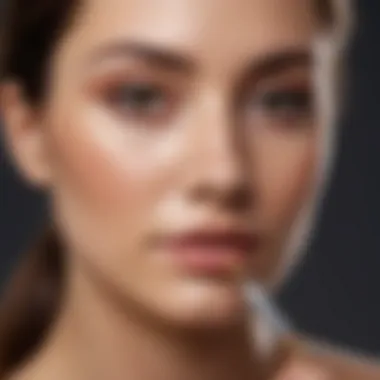
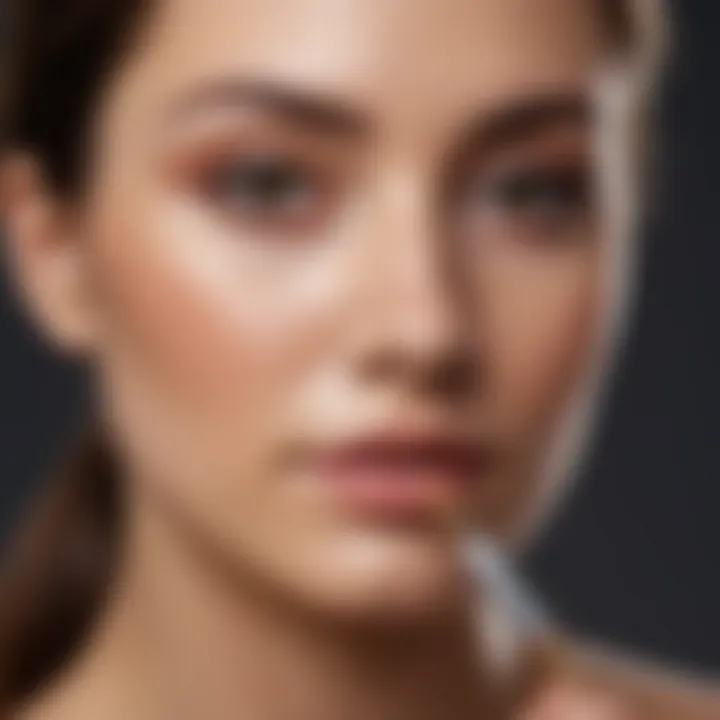
- Hydration Levels: If the skin is dehydrated, concealer can become cakey, leading to an uneven texture.
- Product Formulation: Certain formulas may not adhere well to the skin, leading to a higher chance of creasing.
- Application Technique: Using the wrong tools or applying too much product can exacerbate creasing issues.
Impact of Skin Types on Creasing
Dry Skin
Dry skin tends to absorb moisture from products, which can cause applied concealer to settle unevenly. This skin type often requires additional hydration before application. Dry skin often benefits from creamy concealers that provide moisture. However, an over-application can create a heavy finish, making creasing more pronounced.
Oily Skin
Oily skin produces excess sebum, making it challenging for concealers to stay in place. This skin type may find that liquid concealers slide off throughout the day. Matte formulas can often aid in the longevity of concealer on oily skin. However, these formulas may also contribute to a dry and flat appearance if used excessively.
Combination Skin
Combination skin exhibits dry patches alongside oily areas. This variability can lead to a unique challenge when it comes to applying concealer. Users with this skin type need to choose formulations that suit both ends of the spectrum. A good balance is key—using products designed for both dry and oily areas can help in reducing the chance of creasing.
Sensitive Skin
Sensitive skin can react adversely to certain ingredients, leading to irritation or inflammation. Using harsh products may exacerbate lines, making creasing more likely. This skin type often benefits from gentle, hypoallergenic formulas that provide good coverage without causing discomfort. However, these products may lack the necessary staying power if not paired with a proper setting technique.
Understanding these specific aspects of skin types is crucial in making informed decisions regarding concealer choices.
Key Features of a Good Concealer
Selecting a good concealer goes beyond just color matching. It is vital to consider specific features that contribute to the overall effectiveness and suitability of the product. A well-selected concealer can significantly enhance one’s makeup routine, providing both coverage and longevity. Here, we explore key features that distinguish superior concealers from average products, helping the audience make informed choices in their selection.
Consistency and Texture
The consistency and texture of a concealer largely dictate its application and finish. A good concealer should ideally possess a smooth texture that glides easily over the skin, allowing for effortless blending. Options like cream and liquid concealers are popular due to their versatility. Cream-based formulas typically offer fuller coverage, making them effective for hiding blemishes or dark circles. Conversely, liquid concealers can provide a natural finish while being lighter in feel.
Why it matters: The right texture aids in preventing creasing. A thicker formula might settle into fine lines if not blended well, while a too-thin formula might not offer sufficient coverage. Therefore, testing a few textures on your skin type can lead to discovering the best match.
Long-lasting Formula
A long-lasting formula is an essential feature in any concealer. Many beauty enthusiasts find it frustrating to reapply concealer throughout the day. Products that boast a long-wearing formula can withstand various conditions, including heat and humidity. This aspect becomes increasingly important for those with oily or combination skin types.
Typically, concealers with silicone-based formulas tend to last longer as they create a barrier on the skin. Look for phrases like "water-resistant" or "transfer-proof" on packaging to ensure durability. Investing in a product that provides longevity can save not only time but also enhance confidence in one’s makeup.
Shade Range and Undertones
The importance of a comprehensive shade range cannot be overstated. Concealers should cater to various skin tones and undertones to provide a seamless blend that looks natural. Whether one has olive, warm, or cool undertones, there should be a concealer available that complements their individual complexion.
Understanding undertones: Many people choose shades that match their skin tone but forget to consider their undertone. A warm undertone might require a concealer with yellow hues, while cool undertones benefit from neutrals or pinkish shades. Selecting the right shade is crucial to avoid a mask-like appearance.
"Choosing the correct shade and undertone is the basis for flawless coverage and avoiding makeup mishaps."
By considering these features—consistency and texture, long-lasting formula, and shade range with undertones—individuals can navigate the array of options available in the concealer market. Each feature plays a significant role in achieving a natural, crease-free finish that caters to personal preferences and skin conditions.
Top Concealers for No Creasing
When discussing concealers, identifying products that minimize creasing is essential. Concealers play a crucial role in makeup routines, serving not just to hide imperfections but to create a smoother, more polished appearance. A concealer that does not crease can enhance the overall look by maintaining a fresh finish throughout the day. The importance of finding the right concealer cannot be overstated, as selecting a product that performs well can significantly impact one’s makeup experience. This section will explore three notable brands, focusing on their key features that distinguish them as top choices for achieving a crease-free look.
Brand A: Overview and Features
Brand A, renowned for its innovative approaches in the beauty industry, offers a concealer formulated with long-lasting wear in mind. Its texture is lightweight yet buildable, allowing users to achieve desired coverage without feeling heavy. One of the most praised aspects of Brand A's concealer is its unique formula that includes hydrating ingredients. This ensures that the skin remains moisturized, reducing the likelihood of a dry surface that can contribute to creasing.
Moreover, the shade range provided by Brand A is extensive, with options catering to various undertones. The convenience of selection contributes to better matching with different skin tones, making it a favorite among many makeup enthusiasts. Users report that this concealer stays put, which significantly reduces touch-up frequency throughout the day. Overall, Brand A stands out for its transparency in formulation and commitment to quality, appealing to both casual users and professional makeup artists alike.
Brand B: Overview and Features
Brand B has carved out a niche in the market with its emphasis on ergonomic application. Its concealer features a specialized applicator that aids in precise placement, allowing for effortless blending. This is particularly beneficial in delicate areas such as under the eyes. The formula incorporates light-diffusing particles that help to illuminate the skin while camouflaging imperfections.
In addition, Brand B’s concealer is suitable for various skin types, especially oily and combination skin. The oil-free formula controls shine, allowing for a matte yet natural finish. Users appreciate the quick-drying nature of the product, which helps set the concealer into place before it can settle into fine lines. Brand B offers a balance of affordability and effectiveness, making it a go-to product for many individuals.
Brand C: Overview and Features
Brand C is celebrated for its luxurious take on concealers, utilizing high-quality ingredients designed to optimize skin health while providing coverage. This brand focuses heavily on blending skincare with cosmetics. Their concealer contains antioxidants that not only conceal but also nourish the skin, making it an excellent option for those concerned about potential irritation from daily makeup wear.
The finish of Brand C’s concealer is described as satin, striking a balance between matte and luminous. This feature helps in providing a youthful appearance without the worry of creasing, especially for those with dry skin. The versatility of this product makes it suitable for full coverage or a more natural look, depending on the application technique used. Customers frequently note how little product is needed to achieve effective results, enhancing its value over time.
"Choosing the right concealer is more than just color matching; it is about finding one that complements your skin type and lifestyle."
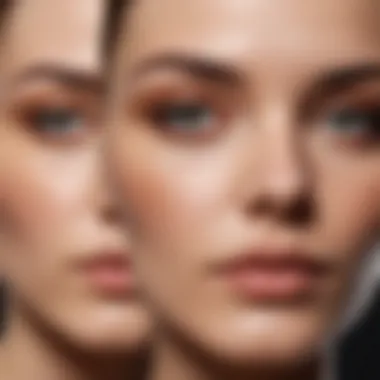
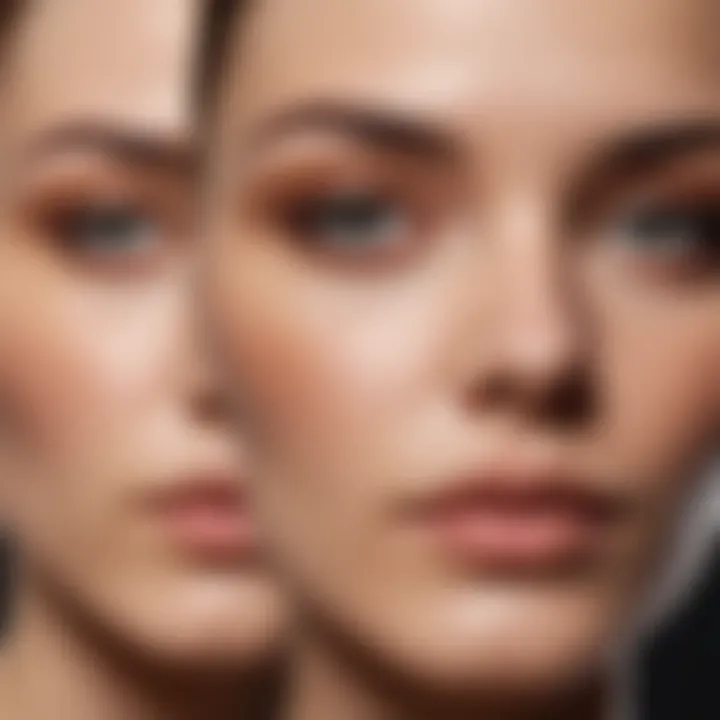
In summary, these three brands offer distinctive benefits that contribute to a no-crease makeup experience. Addressing key aspects such as application, formulation, and skin compatibility, they provide a foundation for confidently selecting concealers that enhance one’s beauty regimen.
Application Techniques
Application techniques play a significant role in the effectiveness of concealers. Understanding how to apply concealer properly can make a profound difference in achieving a crease-free finish. Each method used can influence the product's longevity and appearance on the skin. Moreover, using the right technique helps to minimize common issues such as caking and settling into fine lines. This section will delve into the importance of preparing the skin and different application methods that enhance the overall look of concealer.
Preparing the Skin
Before applying concealer, preparing the skin is critical. Proper skin prep allows products to adhere well and look fresh for longer. Begin with cleansing the face to remove any impurities. After that, apply a suitable moisturizer suitable for your skin type. If you have dry skin, opt for a hydrating formula. Oily skin types should consider lightweight formulations to avoid excess shine.
Next, a primer can be beneficial. Using a mattifying primer for oily skin can help control shine, while a hydrating primer is ideal for dry skin types. By ensuring that the base is smooth and even, the concealer will sit better and reduce the likelihood of creasing.
Applying Concealer Effectively
Using Brushes
Using brushes for concealer application is a popular technique. Brushes provide precision and control, allowing for targeted application, especially around delicate areas such as the eyes. A dense brush encourages even distribution of the product while promoting a natural finish. The key characteristic of using brushes is their ability to blend seamlessly into the skin.
However, one disadvantage is that brushes may absorb some product, leading to potential wastage. They require more cleaning and maintenance too. Still, for a polished and flawless look, brushes remain a beneficial choice.
Using Sponges
Sponges are another favored choice for applying concealer. They offer a soft texture, which helps achieve a seamless blend. A damp sponge can provide a dewy finish while minimizing product absorption. The unique feature of sponge application is its ability to build coverage gradually. This means you can layer the concealer without it feeling heavy or cumbersome.
While using sponges is advantageous for its seamless finish, it does require careful cleaning to maintain hygiene and prevent the spread of bacteria. Sponges tend to have a slight learning curve but can result in an excellent finish when used correctly.
Using Fingers
Applying concealer with fingers presents a straightforward and user-friendly method. It allows for warmth from the hands to melt the product into the skin, resulting in a more natural look. This technique provides excellent control, particularly in areas that require a gentle touch, like the under-eye zone. The key characteristic here is the ease and accessibility of using fingers.
However, this method might not achieve the same airbrush effect as brushes or sponges. Fingers may not blend as effectively, potentially leading to uneven application. Nevertheless, for quick makeup sessions, the finger technique can be the fastest option.
Ultimately, selecting an application technique depends on personal preference and the desired finish. Mastering these methods can help enhance the effectiveness of your concealers.
Setting Techniques
Setting techniques play a crucial role in the overall effectiveness of concealers. The application of these techniques ensures that concealer stays in place and minimizes the likelihood of creasing throughout the day. Understanding how to set concealer properly can elevate a makeup routine, allowing for a flawless finish that withstands various conditions.
One of the primary purposes of setting techniques is to lock the concealer in place. This helps to create a smooth, even surface, which is vital for achieving desired results. Without sufficient setting, concealer can slide off or settle into fine lines, leading to an undesirable appearance.
Importance of Setting Powder
Setting powder acts as a final touch in the makeup process.
- Absorbing Excess Oil: It helps to control shininess by absorbing excess oil. This is particularly important for those with oily skin, as it prevents the makeup from breaking down and shifting.
- Enhancing Longevity: By applying setting powder, you can significantly extend the wear of your concealer. It provides a barrier that keeps other products intact, allowing for long-lasting makeup.
- Smoothing Texture: Setting powder creates a soft-focus effect on the skin. It minimizes the appearance of pores and fine lines, contributing to a smoother finish.
Overall, the importance of setting powder cannot be overstated. It is an indispensable component that enhances concealer performance and creates a polished look.
Recommendations for Setting Powders
Choosing the right setting powder can be overwhelming due to the multitude of options available. Here are some recommendations:
- Laura Mercier Translucent Loose Setting Powder: Known for its lightweight texture, this powder effectively sets makeup without adding additional color or weight.
- RCMA No-Color Powder: This budget-friendly option is loved for its versatility and effectiveness in controlling shine, making it suitable for various skin types.
- Too Faced Born This Way Ethereal Setting Powder: This setting powder is finely milled and designed to create a soft-focus effect while blurring imperfections.
When selecting a setting powder, consider your skin type, desired finish, and whether you want a translucent or tinted product. Experimenting with different formulas can help you discover what works best for your individual needs.
Setting techniques, including the use of setting powder, are essential to preventing creasing and achieving a seamless concealer application.
In summary, mastering setting techniques is invaluable for makeup enthusiasts. Investing in a good setting powder and understanding its application can lead to a significant improvement in makeup longevity and the overall look.
The Role of Climate and Environment
Understanding the influence of climate and environment on concealer performance is essential for achieving a flawless look. Factors such as temperature, humidity, and seasonal changes can significantly affect how makeup applies and lasts. This section will explore the role these external elements play in the effectiveness of crease-free concealers. Recognizing these influences helps beauty enthusiasts make informed decisions about their makeup routines, tailoring them to their specific conditions for optimal results.
How Humidity Affects Concealer
Humidity can drastically impact the longevity and appearance of concealer. In high-humidity environments, the skin tends to produce more natural oils. These oils can mix with concealer, leading to dark, creased, or uneven patches, undermining the initial flawless finish.
To mitigate this, it is wise to choose concealers specifically formulated for humid conditions. Look for lightweight, matte-finish products that promise long-lasting wear. A setting powder can also play a crucial role in absorbing excess moisture and oil, creating a barrier that helps maintain the concealer's integrity.
- Choose a matte finish: Consider using oil-free or matte concealers, which resist breaking down under humidity.
- Layer setting powder: Apply a translucent powder after the concealer to keep it in place.
- Use primer: Applying a high-quality primer can help reduce oil production and enhance the adherence of the concealer.
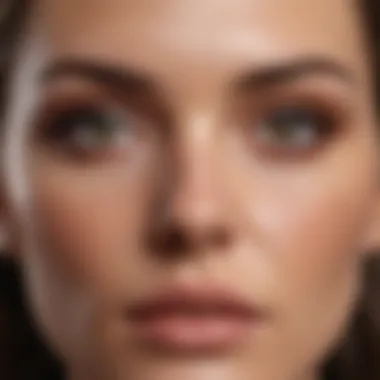

Adapting to Seasonal Changes
Seasons bring about changes in temperature, humidity, and skin behavior. It's essential to adjust your concealer choices and application techniques accordingly. In colder months, skin can become dry and flaky, making full-coverage formulations less ideal. Instead, focus on hydrating or creamy concealers that offer coverage without settling into fine lines or imperfections.
During warmer months, opt for lighter, more breathable formulas. This transition can prevent melting or creasing due to sweat and humidity. Some recommendations for adapting your concealer routine to the seasons include:
- Spring and Summer: Lightweight, water-based concealers that feel fresh on the skin.
- Fall and Winter: Creamier, hydrating concealers designed to provide coverage while combating dryness.
By being attentive to these environmental factors, makeup lovers can achieve a more polished, crease-free appearance, regardless of the climate.
Common Mistakes in Concealer Application
Concealer is a vital product in any makeup routine. However, many people make mistakes that can impact the overall look. Recognizing these common errors is crucial. It allows individuals to enhance their application techniques and achieve a flawless finish. Below are two notable mistakes that can lead to unsatisfactory results.
Using Too Much Product
One of the most frequent mistakes in concealer application is using too much product. This leads to cake-like appearances on the skin. Applying excess concealer can also emphasize fine lines and texture, which is counterproductive. A little goes a long way. Ideally, start with a small amount, then build coverage as needed. This tactic ensures that the concealer blends seamlessly with the skin rather than sitting on top.
Using a light hand while applying concealer can significantly impact the finished look. For instance, if covering blemishes, dot the product onto the area and gently blend with a brush or sponge. This technique helps control the amount applied and promotes even coverage. Remember, sometimes less is truly more.
Mismatching Shade and Undertones
Another common mistake is mismatching the shade and undertones of concealers. Choosing a color that is either too light or too dark can disrupt the makeup harmony. It is essential to find a shade that complements the skin tone.
When selecting a concealer, consider the undertones of the skin. The main categories are warm, cool, and neutral. Warm undertones usually have a yellow or golden base, while cool undertones have pink or blue hues. Neutral undertones sit somewhere in between. Testing a few shades in natural light can help determine the right match.
"The right shade enhances the natural beauty, while the wrong shade emphasizes imperfections."
A well-matched concealer creates a seamless appearance, making imperfections less noticeable. In turn, this improves confidence and the overall makeup look.
Personalizing Your Concealer Choice
Choosing the right concealer is not a mere act of picking a product off the shelf. Instead, it is an intricate process that demands an awareness of one's unique skin characteristics and personal preferences. Personalizing your concealer choice is crucial for achieving the desired results and minimizing issues like creasing, which often undermines a flawless appearance. Understanding your individual needs ensures that your selected concealer works with you, rather than against you.
Considering Your Skin Type
Different skin types react uniquely to various formulations. Recognizing your skin type can help you select a concealer suited to your specific needs.
- Dry Skin: If you have dry skin, hydrating concealers are a must. Look for creamy formulations that provide moisture and do not cake. Products like Tarte Shape Tape Hydrating are excellent options.
- Oily Skin: For oily skin, opt for matte finish concealers. These control shine and prevent excess oil from causing creasing. The Urban Decay Stay Naked Concealer offers a long-wearing, oil-free formula, making it a favorable choice.
- Combination Skin: Individuals with combination skin may benefit from a multi-tasking concealer that balances both hydration and oil control. This could mean alternating between products depending on the area of application.
- Sensitive Skin: Those with sensitive skin should consider hypoallergenic and fragrance-free options. Brands like Neutrogena offer formulations that are gentle yet effective.
Understanding these differences lays the groundwork for achieving a timeless and crease-free look.
Identifying Personal Needs and Preferences
Beyond skin type, individual needs and preferences play a significant role in selecting a concealer. Prioritizing what you personally desire from a concealer can steer you toward more satisfying choices.
- Coverage Level: Determine whether you need full coverage or a lighter touch for minor imperfections. Some prefer sheer coverage for a more natural look, while others may require more intense coverage for factors like dark circles or blemishes.
- Finish: Consider if you prefer a dewy or matte finish. This decision influences how the product interacts with your skin throughout the day. A dewy finish may hydrate and plump skin, while a matte finish can offer a polished look, especially for oily complexions.
- Application Style: Reflect on the method you prefer for application. Some individuals are more comfortable with brush or sponge tools, while others may prefer using their fingers for warmth and blendability. This choice affects how well the product adheres to the skin.
"The key to a successful concealer application lies in the understanding of individual skin needs and preferences."
- Ingredients: Be conscious of ingredients, especially if you are prone to breakouts or allergic reactions. Products free from parabens and sulfates may be more suitable for some.
Ending
The conclusion serves as a pinnacle of understanding within the realm of crease-free concealers. It encapsulates the entire journey that encompasses the nuances of selecting and applying concealers effectively. By synthesizing insights from various sections, this part of the article not only reaffirms the critical takeaways but also reinforces the importance of making informed choices tailored to individual skin types and needs.
An essential aspect to consider is the relationship between product ingredients and their performance. Some ingredients may provide hydration, while others might set the makeup for a longer-lasting look. These elements are fundamental for anyone looking to avoid the dreaded creasing and maintain a flawless appearance. Additionally, recognizing the impact of environmental factors, such as humidity and temperature, can guide readers in selecting the right formulas for different occasions.
Furthermore, the conclusion highlights the value of effective application techniques. Utilizing the right tools and methods can make a significant difference in achieving desired outcomes. Proper preparation, application, and setting techniques have been discussed thoroughly. This knowledge equips readers with the skills necessary to achieve a polished look, free from any creasing mishaps.
Ultimately, the conclusion serves to inspire confidence. It empowers both newcomers and experienced makeup lovers to experiment with various products and techniques to find what best suits them. This article aims to be a valuable resource, leaving readers feeling informed and ready to embrace their beauty journey with clarity and purpose.
Summary of Key Insights
In summary, several key insights emerge from this exploration of crease-free concealers:
- Understanding of Skin Types: Different skin types such as dry, oily, and combination can greatly influence how concealers perform. Tailoring choices to skin needs is essential.
- Importance of Texture and Consistency: The right texture can minimize creasing. A lighter, more fluid consistency often performs better for long-lasting wear.
- Effective Application Techniques: Techniques using tools like brushes, sponges, or even fingers directly affect the final look. Proper application can prevent creasing and ensure a smooth finish.
- Environmental Considerations: Humidity or dry climates significantly impact how well concealers adhere to the skin. awareness of one's surroundings is crucial.
"Choosing and applying concealer intentionally transforms your makeup game; it’s not just about coverage, but about confidence and empowerment."
Final Recommendations
When selecting a concealer, it is vital to keep the following recommendations in mind:
- Test Before You Commit: Always swatch concealers to find the perfect match for your undertone and skin type. Some products may appear different in varied lighting.
- Invest in Quality: Higher-end brands often provide better formulations that are specifically designed to combat creasing. Consider investing in products known for their reliable performance.
- Adapt to Your Environment: Be mindful of your environment. For humid climates, opt for matte formulas, while for drier areas, moisturizing concealers might be more suitable.
- Pay Attention to Ingredients: Look for hydrating ingredients if you have dry skin. Ingredients like hyaluronic acid can provide essential moisture and enhance performance.
- Experiment and Adapt: Makeup is personal. What works for one may not work for another. Continuous exploration within your beauty routine ensures you find the best fit for your needs.
By synthesizing this knowledge and applying these recommendations, readers can navigate the complex world of concealers with greater ease, ultimately enhancing their makeup application and overall confidence.







